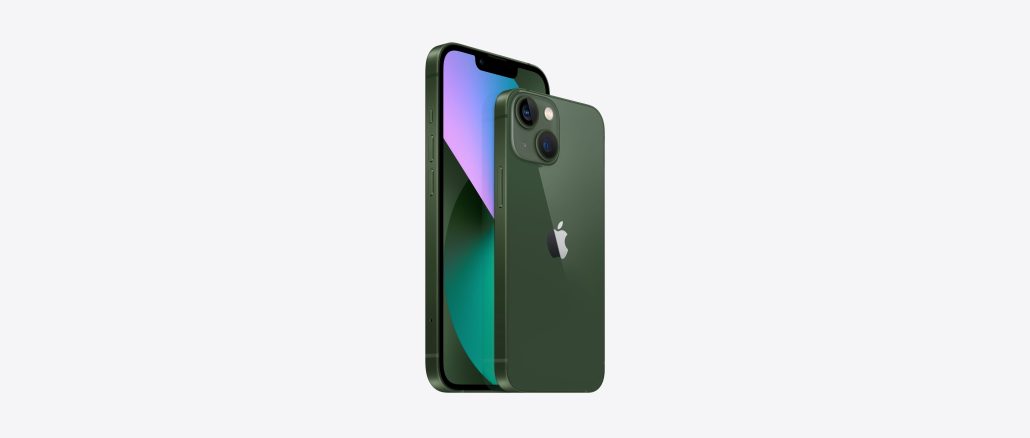
Although it is now considered Apple’s budget iPhone, the 13 hosts a range of features that make it hard to ignore.
On June 2007, Steve Jobs premiered the first-ever iPhone. For the tech industry, this was revolutionary, a turning point for handheld mobile devices that would change the world for the better. Since then, Apple has released phones so often that many struggle to keep up with what number they’re on now. It’s 14, by the way.
With the release of the iPhone 14 in October boasting prices of nearly €2,200, this review focuses on the predecessor, which still, very much so, keeps up with the times.
It has been over a year since the release of the iPhone 13, a tremendously long time in the tech world. However, the 13 is still very relevant and stands out to consumers in the market for a new phone. Referred to as the budget iPhone since the arrival of the 14, it by no means deserves that title, debuting a range of features that have, in fact, been carried to the new model in recent months.
The iPhone 13 costs considerably less than its successor, nearly € 1,300 less if you’re looking for the 14 PRO model. A 13 with 128 gigabytes of storage and a 6.1-inch display will set you back around €925, according to the official apple website. A 13 PRO with 256 gigabytes of storage will cost you more, hitting around € 1,275, which in the grand scheme of things is not bad considering it is still €950 cheaper than the 14 PRO with the same storage.
The phone also brings a new, more efficient battery that provides over nineteen hours of video playback and 75 hours of audio streaming before needing to charge.
The 13 is also the first iPhone to dispense 5G cellular, a substantial first for apple. This means that users can expect higher connectivity speeds, less latency, less interference and take more connected devices than before.
For those interested in the technical side of things, the iPhone 13 models the exact same internal chips as the 14, meaning that the performance is highly similar for the vast price difference. The 13, however, has the less powerful A15 bionic chip as opposed to the new A16 featured on the 14. But for those wanting to use the phone for calls and texts, social media and streaming, the A15 is more than capable of meeting your needs.
4 Gigabytes of RAM and Apple’s new Optical-Image-Stabilisation-Technology mean that running multiple apps and completing tasks is a breeze.
You are treated to only a USB-C charging wire and the phone in the box. Apple’s new campaign to reuse older wires and headphones means the ‘Lightning-C’ headphones no longer have a place in the box.
To look at and feel, the iPhone 13 is sleek and feels like a very premium device. Very few differences between the two phones make the successor a non-starter for most. Its aluminium sides and hardened glass front make it as robust and hard-wearing as the new flagship phone.
The most noticeable change to the iPhone 13 is the camera. The 13 piloted the second generation dual camera, based on the first generation design that premiered on the iPhone 11. The 13’s new camera includes a 12-megapixel lens, allowing for primary and ultra-wide picture taking and a true depth feature for the photography nerds to play around with.
All iPhone 13 models still have the original; however, a little smaller notch that dips into the screen to house the front camera, like models that came before. The smaller and sleeker notch allows for more screen space whilst holding a more powerful front camera. For the iPhone 14, Apple has replaced the notch with a pill shape cut out that sits about an inch into the screen, housing a flagship triple-lens front camera and Face ID bionic chips.
In theory, it makes it one of the best phones you can buy now, and with the significant price increase for the new iPhone 14, many are going to opt for the 13 as the 14 boasts little over its predecessor. The 13 comes with the same 7-year software updates as the 14, which mean it can be used for longer and more safely.
By all means, the iPhone 13 could be better. Its screen has impressive graphics with a crisp 60Hz screen, but rivals such as the Samsung S21 and the OnePlus 9 top it with groundbreaking 120Hz screens that allow for smoother scrolling, but with such a broad range of features for over a thousand euro less, the iPhone 13 should definitely be very near the top of your list if you are upgrading from older iPhones or androids.
4.5/5 stars
Cian Etherington
Photo Credit: Apple
